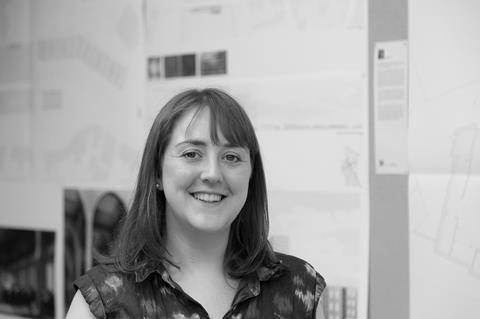The public are hungry for stories. Podcasts could be the perfect format for communicating architecture, argues Eleanor Jolliffe

I am a compulsive listener to talk radio and podcasts; Serial, Pod saves the World, This American Life, Political thinking, From our own correspondent, The Guilty Feminist… I could go on. My knowledge and understanding of politics and social issues is influenced and added to almost daily from voices from across the English-speaking world.
Humans are storytellers. Something primal in us reacts to verbal storytelling, almost as if our earbuds allow us to gather around a digital campfire to be entertained, informed or shocked. It seems unsurprising that the true crime genre has grown exponentially – tales of humanity in crisis or extremes always fascinate.
However, there is a particularly notable exception to my regular listening list – architecture and urbanism. So, over the last week I tried a couple of episodes of as many architecture-related podcasts as I could find – which is not many. Largely they seem to be back episodes of design and architecture talk radio shows, varying from specialist shows to one-off episodes of long-running radio documentary series. They are interesting but not immersive or compelling in the same way a Serial-style podcast is. Architecture podcasts offer theory and architecture talk for architects, but I struggled to find anything with narrative.
Two podcasts did stand out from the crowd for me: 99% Invisible and About Buildings and Cities. About Buildings and Cities is a well-researched, intellectual and charmingly rambling exploration of architectural history and architecture in film. Great fun – but not necessarily an introduction to architecture for the lay listener.
99% Invisible is a little more polished, has higher production values and is American. It’s highly enjoyable and easier to follow. The House that Came in the Mail (ep.323) is a particularly fascinating exploration of Sears catalogue kit homes from the 1920s.
But I digress. This lack of narrative astounds me. The most fascinating part of architecture for me has always been how narrative it is: how a building goes together; who does each part and how they coordinate; how the brief developed over time; who it is for; how they intend to live/work/shop there; how they actually live/work/shop there; can a building change an instinctive reaction to a situation?; how does a design dovetail with regulations and social movements?; how society impacts the very fabric of its cities through laws and zeitgeists?… Even breather membranes become almost fascinating when someone in the know talks to you about what they do and how and why.
Describing my day in detail to my sister (who is on maternity leave and was in need of a conversation that wasn’t about her daughter) I realised how interesting what I do can be. The day I was describing wasn’t spectacular – a meeting with some joinery contractors to discuss site details and programme, ordering some samples, working through some design options and re-drafting a presentation for a meeting… nothing out of the ordinary. However, her reaction surprised me. I was expecting bland uh-huhs but instead got pointed questions about why that was my job, and how was doing that anything to do with being an architect? She was amazed at the scope of what I might cover in a day and how much some of it seemed disconnected from what she thought “being an architect” was. I realised how much of our job goes un-communicated, passed over, and couldn’t help but remember my GCSE maths teacher’s red-inked writing across my workbook: “Show your working!”
Recently I led tours of our office for Open House weekend and again I found it was the narrative that fascinated; the concrete was interesting not so much for itself (though it’s good concrete) but for the story of its manufacture. It was the anecdotes of how the building impacts on our office life; mishaps during its construction; or the reasons behind that shade of green/shape of topiary that engaged the groups the most.
I am not in a position to launch a podcast talking about the details of my work but if Sarah Koenig can make a year in the life of a Cleveland courthouse compulsive and addictive listening I am certain that someone else could make the story of just one small loft extension, or one block of flats, fascinating listening.
The words “housing crisis” have the power to stultify politicians and whip tabloid readers into a frenzy but how many of those readers (or policy makers or ministers) have any idea about the process of finding a site, developing a brief, designing, getting planning, detailing and constructing even one house? I am certain that, well done, this type of podcast would communicate entertain and inform, and probably find a rather wide audience.
Too often in these pages we bemoan architects’ ability to communicate what we do or why we do things. Maybe it’s time to try a new format.
NB Apologies to any small and excellent podcasts that I haven’t found yet. If you already do this – please leave your podcast in the comments and I am certain I will enjoy listening.
















14 Readers' comments